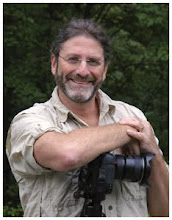A circular polarizer wont work on wide angle lenses, you cant use it on anything wider than 24mm.
I could fill a book with statements like that. Usually made by people who do more talking than photographing. The truth is, if you are shooting clear blue skies in mid-day in landscape orientation at the right angle to the sun, then yes, a circular polarizer will cause some problems with an uneven sky. But as most professional landscape photographers know, the reason you use a circular polarizer isn't to make blue sky darker blue. It is used to cut glare and enhance color. If all you want to do is make the sky darker blue, you can use a Graduated Neutral filter or do it in post processing. If I want darker skies, I use the graduated filter.
Think of it this way, why do we wear polarized sunglasses? To cut glare.... Think of a circular polarizer as sunglasses for your camera. I probably use my Singh-Ray polarizer for 75 percent of my shots. For a landscape photographer, it is one of the most useful tools available and the effect can not be reproduced in post processing.
One of the best uses of a CPL (circular polarizer) is around water and forest scenes. The polarizer will cut the glare from the water surface as well as from the wet rocks. Let's say we are shooting a forest stream, we are most likely going to find rocks, trees, shrubs and bushes. All of these surfaces are affected by light and can have some color robbing glare, even on dark cloudy days.
Here is an example of a scene shot without a polarized effect and with polarization. Notice not just the water, but the leaves, ferns and trees also have reduced glare and enhanced color. The scene was shot using a 16mm extreme wide angle lens by the way.
This is the before, the water, rocks and fallen trees have some glare to varying extent. Notice even the leaves have glare, something that we have to deal with in the Pacific Northwest. The glare is robbing the scene of some color too.
(When shooting in the woods, it is usually best to go very early or late, or on overcast days since a camera cant capture the entire dynamic range of light for a scene in sunshine. You either wind up with blown out bright parts with no color or pure black shadows that should have some detail in them and often times you get both blown and pure black areas.)
(When shooting in the woods, it is usually best to go very early or late, or on overcast days since a camera cant capture the entire dynamic range of light for a scene in sunshine. You either wind up with blown out bright parts with no color or pure black shadows that should have some detail in them and often times you get both blown and pure black areas.)
 This is the after, you can see some of the colorful rocks under the surface of the water, the glare is mostly gone from the leaves and rocks adding more color to the scene. With a CPL you can vary the effect by rotating the front piece of glass. Sometimes you may not want top cut all the glare. many times on a still lake that has a beautiful reflection of a mountain, I will reduce the effect so the reflection is the main subject and not what is seen below the surface of the water if I had fully polarized the scene.
This is the after, you can see some of the colorful rocks under the surface of the water, the glare is mostly gone from the leaves and rocks adding more color to the scene. With a CPL you can vary the effect by rotating the front piece of glass. Sometimes you may not want top cut all the glare. many times on a still lake that has a beautiful reflection of a mountain, I will reduce the effect so the reflection is the main subject and not what is seen below the surface of the water if I had fully polarized the scene.





